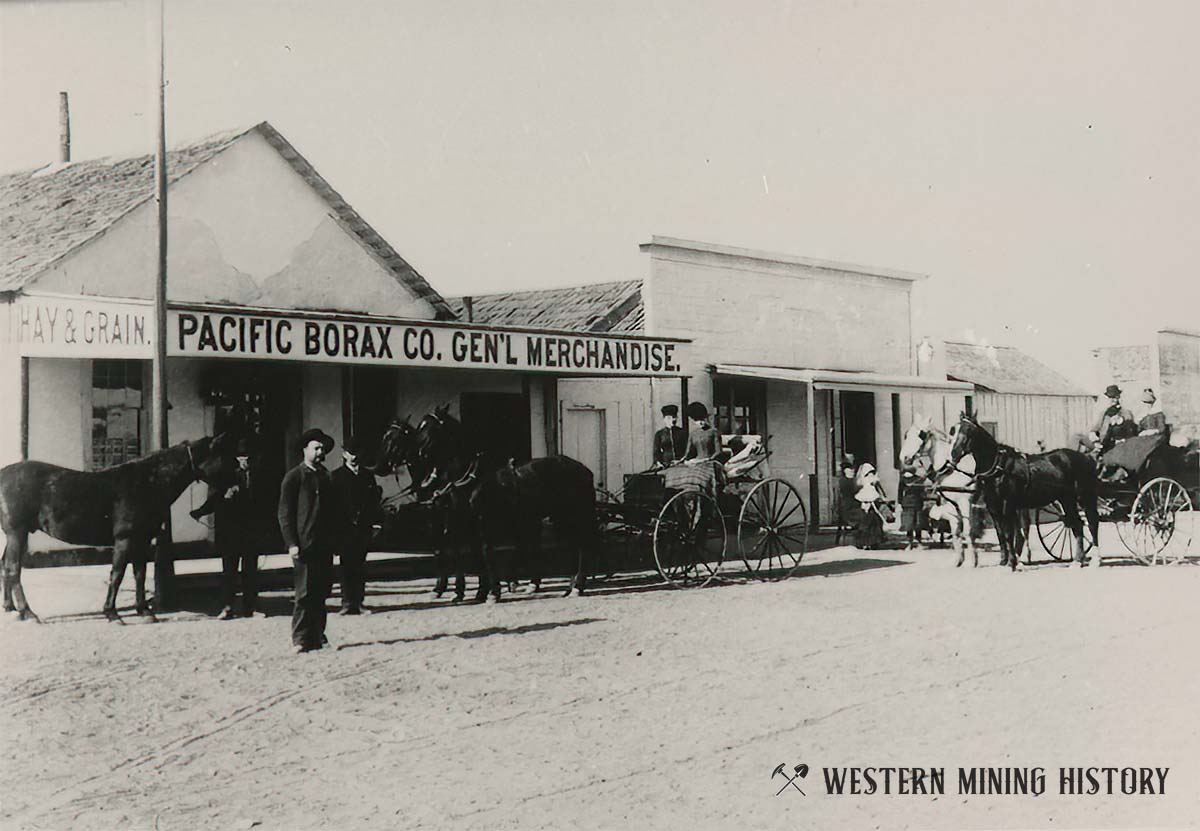Columbus History
Not long after the nearby discovery of silver by a company of Spanish prospectors, the town of Columbus was established in 1865 by American settlers. The town was an early milling center for newly developed gold and silver mines of the area, with a stamp mill being moved here from Aurora in 1866. Columbus counted 200 residents that year.
Columbus was located on the edge of an alkali flat and attention soon turned to the borax deposits of the area. By the early 1870s four companies were shipping borax from this location, including the prominent Pacific Borax Company, which initiated operations in September 1872, constructing its facilities roughly five miles south of the town.
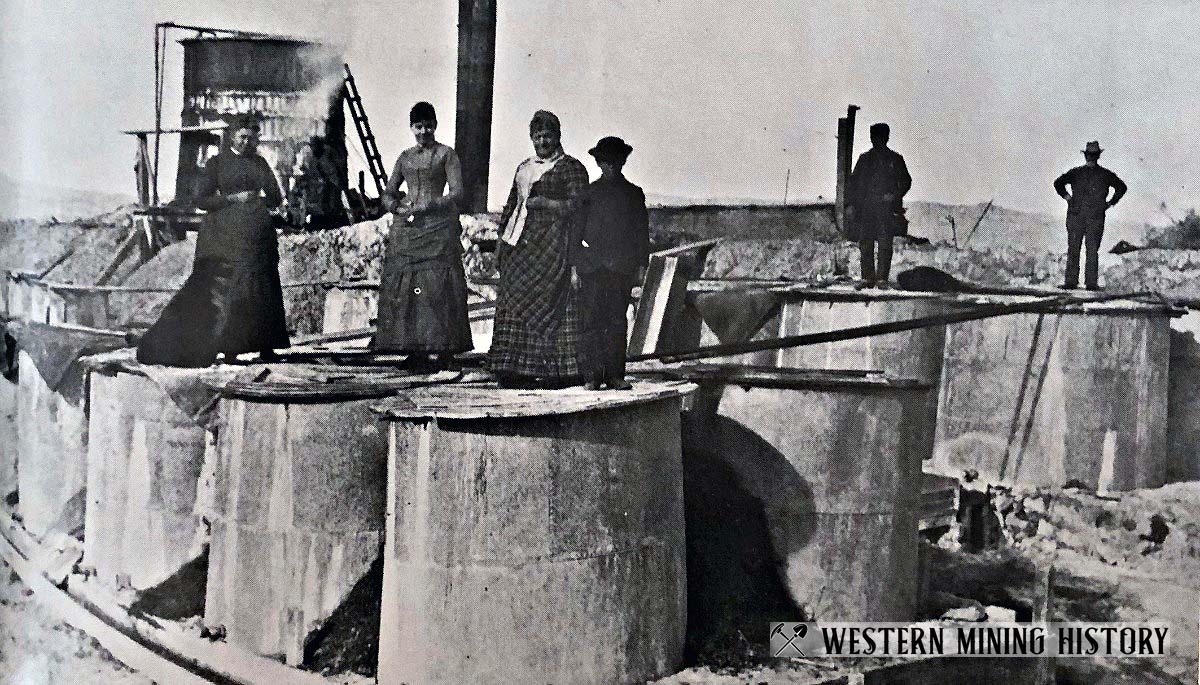
This was the most prosperous period for the Columbus, and the town had expanded to several hundred inhabitants and boasted a range of amenities, including stores, an adobe school, post office, iron foundry, and a weekly newspaper named the Borax Miner. Three mills, equipped with a total of 28 stamps, crushed ore from silver mines from the emerging Candelaria district to the north of town.
By the summer of 1875, approximately 28 freight teams transported silver and borax 125 miles north to Wadsworth, which was the closest rail depot. By 1876, Several stagecoach operators provided transport services to neighboring locations like Lida and the growing towns of the Candelaria district.
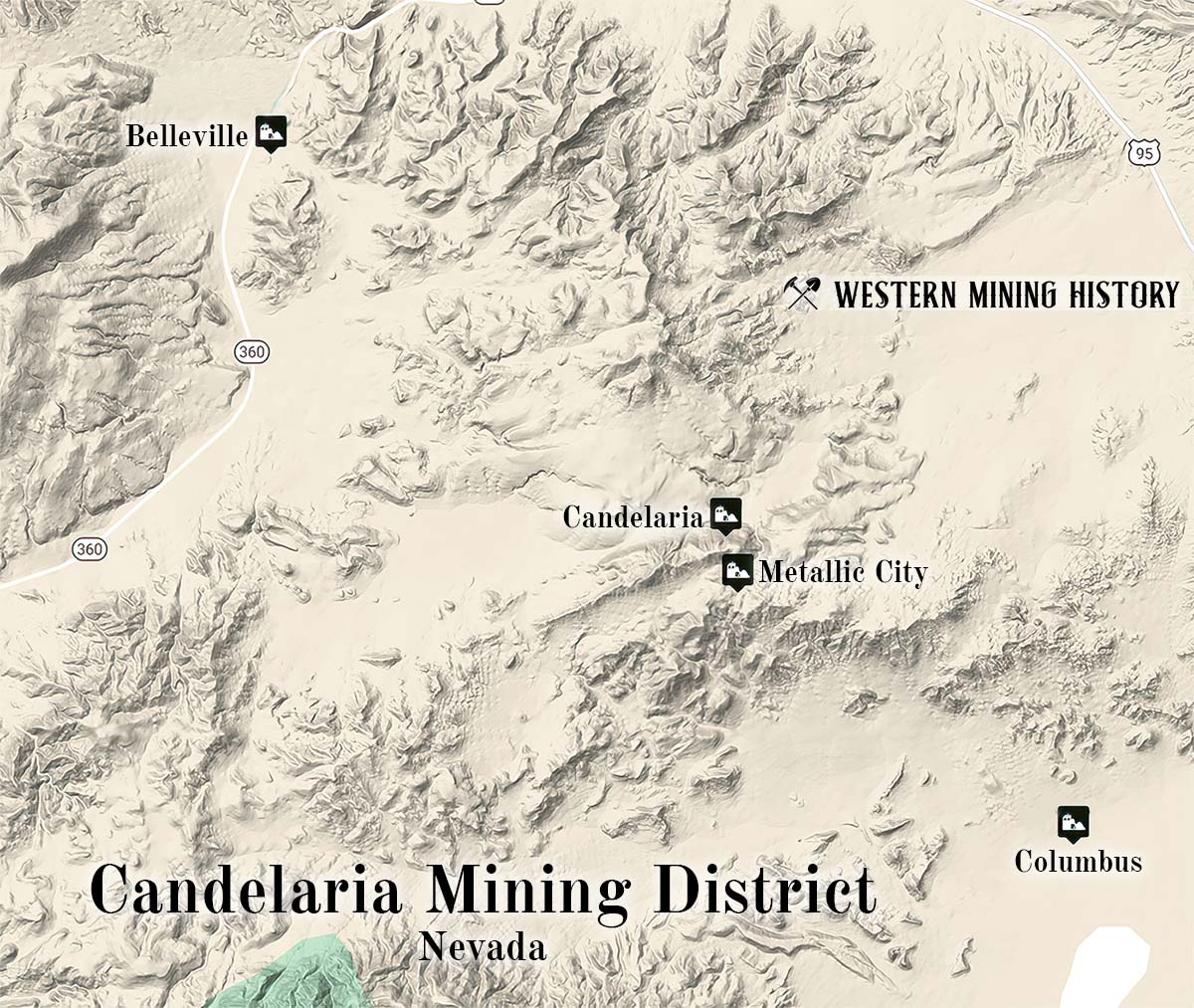
Columbus had become an important city by this point in Nevada's history, and several locations competed to get all the freight business flowing north to the state's only railroad line. Residents of the city of Carson put up over $15,000 dollars to build a wagon road to Columbus, a project that took nearly two years to complete, yet newspaper articles reported that the Wadsworth road was getting all the freight traffic, and that "there must be some powerful interests pulling against the Carson and Columbus road."
The prosperity of Columbus was short-lived. The decline began in earnest after 1875 when the Pacific Borax Co. elected to construct a larger plant at Fish Lake, 30 miles to the south. By 1880, the population had dwindled to around 100 individuals, supporting only a dozen businesses. In the ensuing years, varied enterprises were attempted, including horse racing, sponsored by the Columbus Jockey Club, and a soap factory operated starting in 1881. Yet by the mid-1880s, the once-thriving town of Columbus had become a dormant camp.
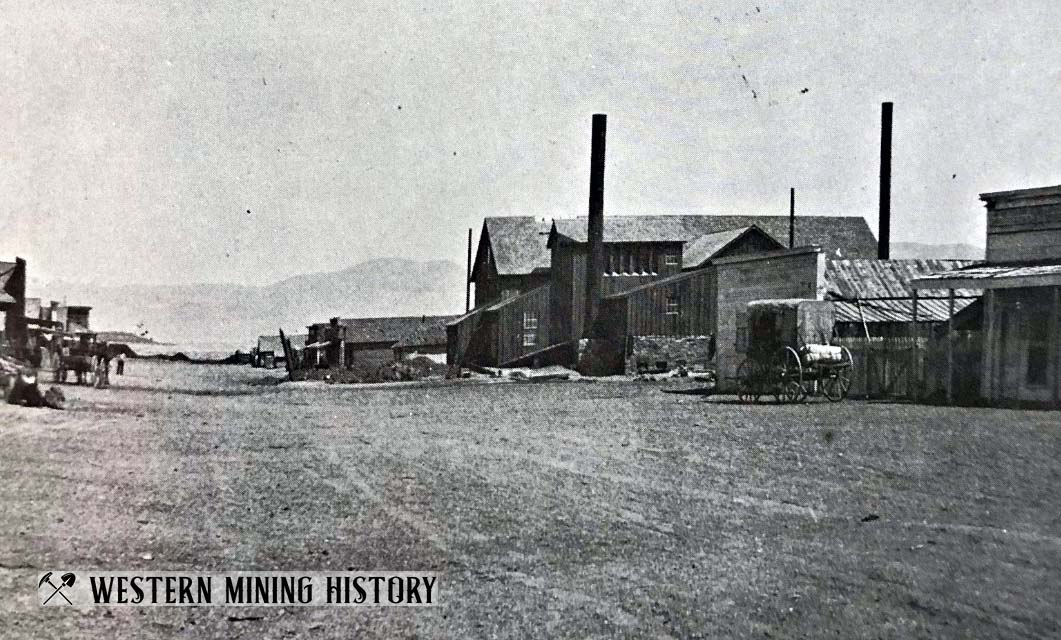
Subsequent decades saw sporadic mining activities, including those centered at Calmville, seven miles south, which operated its own post office from 1893 to 1895. More recent endeavors, such as the unsuccessful flotation mill of the early 1950s and a cyanide plant that ran from 1955 to the end of the decade, left lasting remnants in the form of foundations and tanks, located two miles east of the Columbus townsite.
Nevada Mining Photos
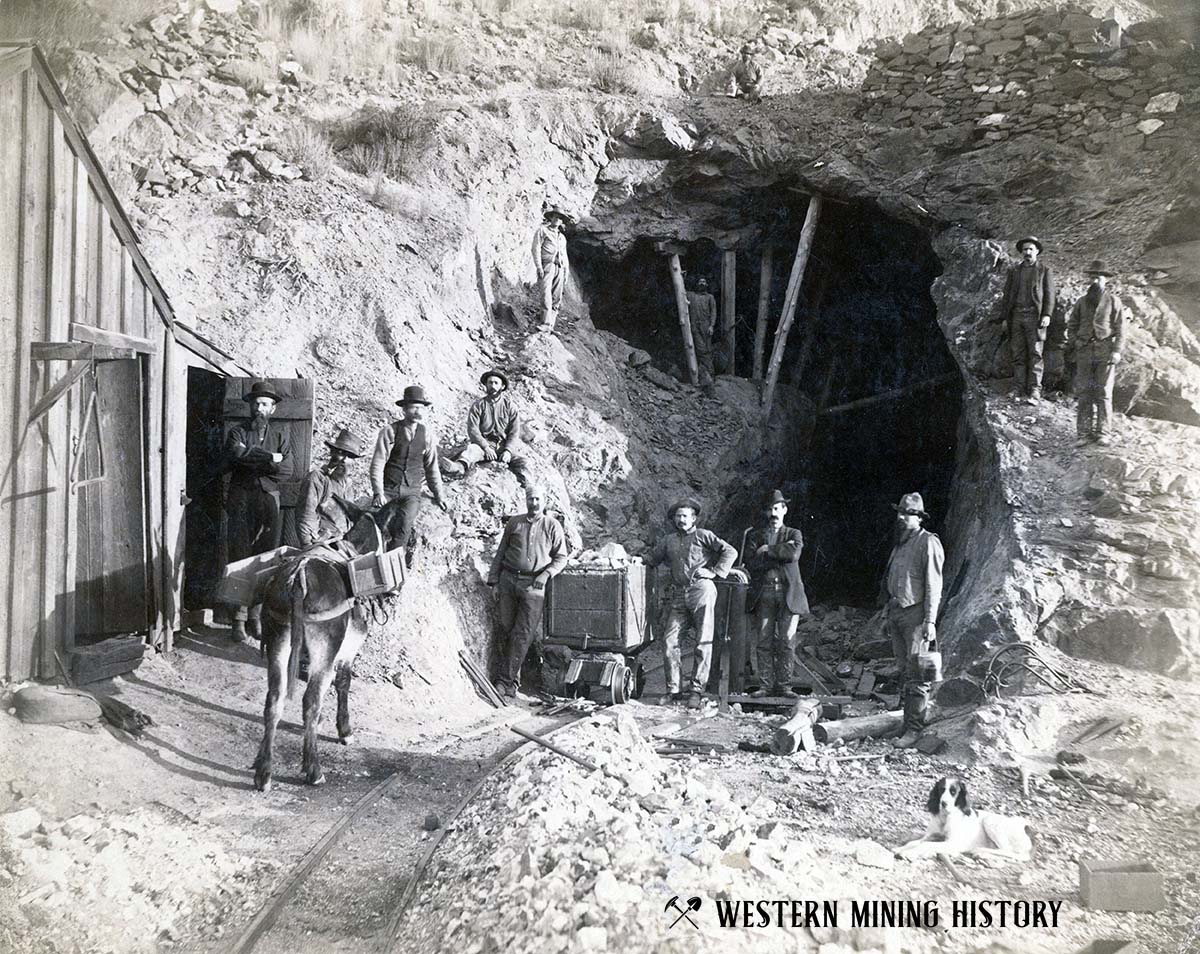
A Collection of Nevada Mining Photos contains numerous examples of Nevada's best historic mining scenes.
Nevada Gold

Nevada has a total of 368 distinct gold districts. Of the of those, just 36 are major producers with production and/or reserves of over 1,000,000 ounces, 49 have production and/or reserves of over 100,000 ounces, with the rest having less than 100,000 ounces. Read more: Gold Districts of Nevada.
